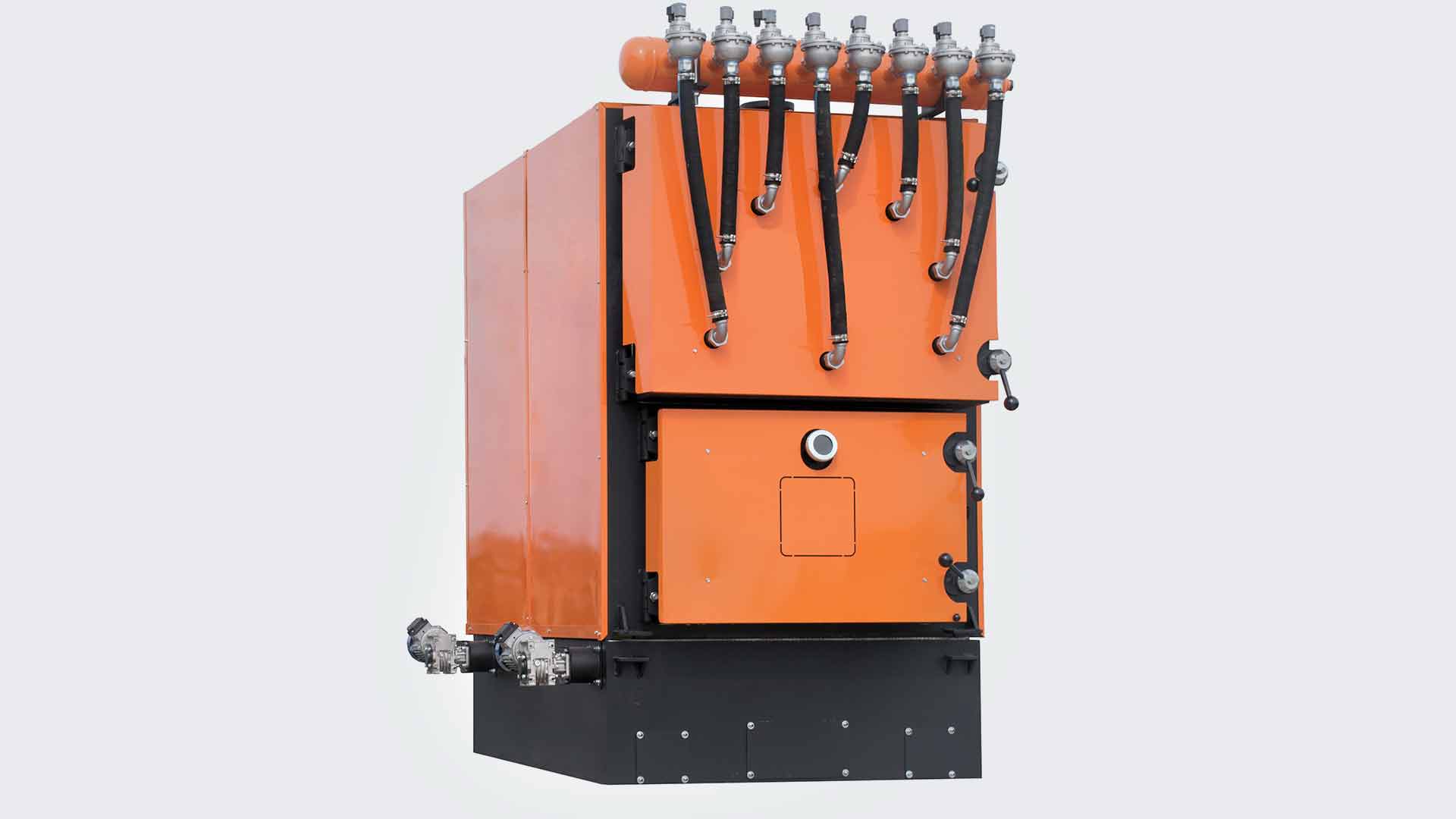There’s been some exciting biomass energy developments coming out of AURI since the last issue of Ag Innovation News. Earlier this year a new feasibility study, conducted in part by AURI, showed biomass cooling can be a viable option for small-to-medium sized commercial, industrial and residential units. The research results, which are part of the Biomass for Cooling System Technologies: A Feasibility Guide, also identifies innovations that utilize biomass as the essential wellspring of energy for cooling systems.
The study, created through a partnership between a cohort of organizations that included AURI and two University of Minnesota groups: the Center for Urban and Regional Affairs (CURA) and the Northwest Regional Sustainable Development Partnership (NWRSDP), shows that biomass cooling technology has multiple advantages. The report found that biomass cooling can be both an economical alternative to traditional cooling systems as well as an environmentally friendly option. By implementing biomass cooling, users have the potential to mitigate future increases in energy costs while also reducing their carbon footprints. Additionally, facilities with biomass heating units can further utilize their base infrastructure investment for additional months each year.
“The potential for this technology is amazing in that it can be an economically feasible option for implementation in multiple applications, including commercial and residential units,” said Shannon Schlecht, AURI’s executive director. “Additionally, the analysis illustrates another renewable energy solution that can benefit local economies and businesses in Minnesota and the region.”
As excerpted from the reports executive summary:
Biomass cooling technologies currently exist but only on a large commercial scale. In response to climate change, acting now to mitigate the projected increases in energy costs is critical and necessary in planning for the future. This is especially true for the Midwest where current projections indicate the region will see large energy cost increases due to expenditures associated with switching from heating demand to cooling demand.
The timing is ripe for exploring alternative renewable energy opportunities to utilize biomass for cooling. The need to cool buildings is vital to many businesses; however, cooling systems are energy intensive and costly. Biomass is currently separate from other vital sources of energy. However, a biomass-derived cooling innovation creates a natural, renewable energy source for cooling systems. This may be welcome news for small-to-medium sized commercial, industrial and residential units, as well as manufacturers and retailers of biomass boiler systems.
The intent of this research was to identify innovations that utilize biomass as the essential wellspring of energy for cooling systems. Research findings  include identifying cooling systems processes and components transferable to a biomass system. One key component that runs the absorption chiller is the refrigerant, Lithium Bromide (LiBr), which generates the cooling effect.
include identifying cooling systems processes and components transferable to a biomass system. One key component that runs the absorption chiller is the refrigerant, Lithium Bromide (LiBr), which generates the cooling effect.
The study, which is available to the public from AURI’s website, details a number of exciting opportunities for the technology. In the process of attaining in-depth information about biomass cooling and its implementation opportunities, AURI gained valuable information regarding the working principle of commercially available cooling systems, including different types of system components and capacities.
According to Project Manager Becky Philipp, “this project ties in to the AURI mission as it provides a potential added benefit for biomass thermal system installations that could ultimately result in expanded market opportunities for biomass and the biomass industry in Minnesota and beyond.” Philipp went on to say that while the economics may not work for all types of biomass fuel at a given time, the information provided in the report facilitates forward thinking and future planning for when the economics do prove feasible. The report identifies technologies that present opportunities for other potential add-on benefits when employing or looking to employ biomass for heating, which makes the investment even more attractive.
AURI Senior Associate Scientist Alan Doering expanded on the economic aspect by saying, “availability and transportation costs will dictate the most economic biomass fuel sources. Utilizing a renewable biomass fuel over conventional or petroleum based fuels can reduce negative impacts on the environment, provide energy security, as well as develop new job creation within communities.”
AURI believes this feasibility study will help open the door for continued development and implementation of biomass cooling technology for commercial, industrial and residential use. Future updates on this subject are can be found on the AURI website, or by contacting AURI at news@auri.org.
To view the complete report, visit auri.org/research-reports/biomass-for-cooling-system-technologies-a-feasibility-guide/
University of Minnesota, Center for Urban and Regional Affairs (CURA)
Northwest Manufacturing, Inc. / WoodMaster, Minnesota
University of Minnesota, Northwest Regional Sustainable Development Partnership (NWRSDP)
Greater Minnesota Management (GMM)
Western Illinois University, Illinois Institute for Rural Affairs (IIRA)
Northwest Minnesota Multi-County Housing & Redevelopment Authority (NWMNHRA)
Heating the Midwest Biomass Resources & Demographics Action Team
Pinecrest Medical Care Facility, Michigan
